At The Midtown Practice, one of the most common questions we receive from parents during summer months is whether their child should take a break from ADHD medication. This decision involves multiple factors, and there’s no one-size-fits-all answer.
Understanding ADHD and First-Line Treatment
ADHD is the most common neurodevelopmental disorder in children and adolescents, with a worldwide prevalence between 5 and 7%. Getting a diagnosis and finding the right medication for your child can be challenging enough, but navigating when to treat and when to give your child a break is another issue entirely.
What Are First-Line ADHD Medications?
First-line therapy for ADHD in children and adolescents means the treatment that doctors usually recommend first because it’s the most effective and safest option based on research and clinical experience. For most children with ADHD, especially those 6 years and older, the first-line treatment is typically stimulant medication, or psychostimulants.
Common ADHD medications include:
- Ritalin LA
- Concerta
- Adderall XR
- Vyvanse
- Jornay PM
- Focalin
These medications help improve focus, reduce impulsivity, and manage hyperactivity by increasing levels of dopamine and norepinephrine in areas of the brain that help with attention and self-control. They’re first-line because they work in 70-80% of kids, act quickly, and can usually be adjusted to minimize side effects.
Common ADHD Medication Side Effects
However, some side effects that young people still experience include:
- Appetite disturbance (specifically appetite suppression at lunchtime)
- Sleep disruption (difficulty falling or staying asleep)
The Science Behind Continuous ADHD Treatment
As a clinician who treats young people with ADHD every day, I can tell you that there is no one right answer as to whether you should give your child a medication holiday. We do know that treating your child for ADHD as early and consistently as possible using first-line psychostimulant medication helps children and adolescents with ADHD develop increased grey matter in their prefrontal cortex (PFC).
The PFC is where decision-making, planning, impulse-control, judgment, reasoning, and problem-solving take place. Grey matter volume tends to be less dense in the PFC in children who have ADHD. Studies have shown that treating ADHD with psychostimulants early and often can help young people develop more dense grey matter in the PFC and build strength in the functions for which the PFC is responsible.
Age-Specific Considerations for ADHD Medication Holidays
Children Ages 6-12: Managing Hyperactivity and Social Settings
Children who are treated for ADHD tend to present with more hyperactivity symptoms than their teenage counterparts. This means more impulsivity, intrusive play with their peers, and difficulty controlling their bodies in play and structured settings.
Hyperactivity symptoms in ADHD include:
- Difficulty waiting one’s turn
- Interrupting or intruding on others’ conversations and activities
- Excessive talking
- Difficulty playing quietly
Summer Camp and Social Considerations
When children attend settings like day and sleep-away camp, hyperactive symptoms can present real challenges for children who want to fit in, enjoy activities alongside their peers, and avoid discipline from counselors and other authority figures. If you know that your child struggles with controlling their impulses in school, they will likely struggle with managing their impulses at camp.
I almost always recommend that hyperactive children remain on their medication when they will be in settings where:
- Cooperative play is expected
- Listening and following instructions are required
- Maintaining physical boundaries is necessary
When a Medication Holiday Might Be Appropriate
However, if your child is mostly going to be enjoying unstructured activities like swimming, playing outside, or hanging out with neighbors, a medication holiday may be appropriate if you feel confident about managing your child’s behavior.
Consider maintaining medication if you worry about:
- Your child’s safety (crossing streets without looking)
- Poor judgment (running off with strangers)
- Inability to follow rules (letting phone die, losing track of time)
Managing ADHD Medication Side Effects in Children
Appetite Suppression and Growth Concerns
Psychostimulant medication can often cause appetite suppression. Children who take long-acting stimulants often don’t feel hungry for lunch and can sometimes miss out on midday calories. This can be concerning for parents, especially if it results in weight loss or concerns about the child’s growth trajectory.
Important note: Stimulant medication’s impact on growth tends to be modest and only temporary. We see slight reduction in height/weight gain in the first 1-2 years of treatment, with most kids catching up over time.
Nutritional Strategies for Children on ADHD Medication
If your child continues medication through summer, ensure they’re hitting nutritional goals by loading up on calories and nutrients during breakfast and dinner when their appetite should be intact.
Recommended foods include:
- Healthy fats: Avocados, nuts, seeds, nut butters, fish, eggs
- Protein: Greek yogurt, cottage cheese, lean meats, protein smoothies
- Whole grains: Oatmeal, whole wheat breads and pastas, whole grain cereals
Sleep Issues and ADHD Medication
If your child’s sleep is impacted by their stimulant medication, this should be addressed immediately with your prescriber. Sleep is especially important for kids with ADHD because it directly affects their brain functions, mood, behavior, and ability to focus.
If sleep problems persist despite:
- Consistent bedtime routines
- Limited screen time before bed
- Calm bedtime environment
A medication holiday may be prudent for your child over the summer.
Teenagers Ages 13-18: Different Considerations
Considerations for teenagers are slightly different than for children and pre-teens, but many themes remain the same. We consider the setting where the teen will spend most of their time, the demands of that setting, and whether the teen can remain safe without psychostimulant treatment support.
How ADHD Symptoms Change in Teenagers
Teenagers tend to outgrow most hyperactive ADHD symptoms due to socialization. However, this population can be just as prone to impulsivity as their younger counterparts; it simply manifests differently.
Teen impulsivity may include:
- Impulsive decisions while driving
- Taking reckless risks (jumping into unknown water depths)
- Difficulty staying attentive during internships
- Inability to focus while studying for important tests like the SAT
Safety Considerations for Teens with ADHD
Teenagers with ADHD face new risky behaviors when they have more freedom to spend unsupervised time with friends. One of the most dangerous behaviors teens with ADHD are more likely to experiment with is substance use.
Teens may use substances to:
- Cope with boredom, stress, or low self-esteem
- Achieve a feeling of “fitting in”
- Self-medicate for comorbid conditions like anxiety or depression
Important: Studies have shown that early and consistent treatment with psychostimulants lowers the likelihood of later substance misuse. Untreated ADHD is a much higher risk factor for drug experimentation than stimulant treatment itself.
Monitoring Signs of Substance Use in Teens with ADHD
Parents should monitor for signs including:
- Loss of interest in activities
- Changes in friend groups
- Unexplained money issues
- Breaking curfew
- Bloodshot eyes
- Withdrawal from family
- Increased conflict
- Poor hygiene/appearance
Making the Right Decision for Your Family
The decision about ADHD medication holidays should be made individually, carefully weighing potential benefits and risks. Consider your child’s specific needs, summer activities, safety concerns, and any side effects they’re experiencing.
At The Midtown Practice, our experienced child psychiatrists can help you navigate this decision and develop a plan that works best for your family’s unique situation.
Contact us today:
Phone: 212.286.8801
Email: info@midtownpractice.com
Frequently Asked Questions about ADHD Medication
Q: How long can my child safely take a medication holiday?
A: The length of a medication holiday varies by individual. Some children can safely take breaks for the entire summer, while others may need shorter breaks. Always consult with your prescriber before stopping medication.
Q: Will my child experience withdrawal symptoms when stopping ADHD medication?
A: ADHD stimulant medications typically don’t cause physical withdrawal symptoms, but you may notice a return of ADHD symptoms. Your prescriber can guide you on the safest way to discontinue medication.
Q: Can my child’s ADHD symptoms get worse after a medication holiday?
A: ADHD symptoms will return to their baseline level when medication is stopped. They don’t typically get worse, but the contrast may make them seem more noticeable after a period of treatment.
Q: Should I restart the same dose after a medication holiday?
A: Never restart medication without consulting your prescriber. Dosage may need adjustment based on your child’s growth, weight changes, or other factors.
Q: What activities are safe for children with ADHD during medication holidays?
A: This depends on your child’s specific symptoms and impulsivity levels. Discuss with your prescriber which activities and settings are appropriate for your child during a medication break.
Sources
American Academy of Pediatrics. (2019). Clinical Practice Guideline for the Diagnosis, Evaluation, and Treatment of Attention-Deficit/Hyperactivity Disorder in Children and Adolescents. Pediatrics, 144(4), e20192528.
- Cortese, S., et al. (2018). Comparative efficacy and tolerability of medications for attention-deficit hyperactivity disorder in children, adolescents, and adults: a systematic review and network meta-analysis. The Lancet Psychiatry, 5(9), 727-738.
- Shaw, P., et al. (2014). Psychostimulant treatment and the developing cortex in attention deficit hyperactivity disorder. American Journal of Psychiatry, 171(1), 58-65.
- Molina, B. S., et al. (2013). The MTA at 8 years: prospective follow-up of children treated for combined-type ADHD in a multisite study. Journal of the American Academy of Child & Adolescent Psychiatry, 52(7), 696-705.
- Faraone, S. V., & Buitelaar, J. (2010). Comparing the efficacy of stimulants for ADHD in children and adolescents using meta-analysis. European Child & Adolescent Psychiatry, 19(4), 353-364.
- Pliszka, S. (2007). Practice parameter for the assessment and treatment of children and adolescents with attention-deficit/hyperactivity disorder. Journal of the American Academy of Child & Adolescent Psychiatry, 46(7), 894-921.
- Wilens, T. E., et al. (2003). Does stimulant therapy of attention-deficit/hyperactivity disorder beget later substance abuse? A meta-analytic review of the literature. Pediatrics, 111(1), 179-185.



